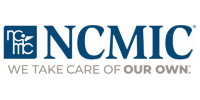Many are now aware that the Council on Chiropractic Guidelines and Practice Parameters (CCGPP) is creating a chiropractic best practices process entitled the "Chiropractic Clinical Compass". In May of 2006 the CCGPP released the initial draft of the Introduction and Low Back evidence stratification and synthesis. This document has generated considerable commentary and concern throughout the profession. The purpose of presenting the initial draft document on the internet was to generate just such feedback. The CCGPP Council and Commission members wanted to promote the best practices concept as an iterative process. We have been monitoring all the responses and thank everyone who has presented constructive criticism and creative suggestions to enhance the document. The CCGPP also recently held a spirited forum at the COCSA annual meeting. The focus of that forum was additional clarification of the "Compass" process. This additional feedback will also be considered for use in the final document. However, the intent of this article is to dispel some confusion that has arisen regarding the best practices process. Most importantly, the initial low back draft document that many have reviewed is NOT the "Chiropractic Clinical Compass" (See Figure 1). What you have seen to date is merely the evidence stratification for the most common low back conditions seen in the average chiropractic clinic. The Council understands that this evidence stratification is a dry, difficult to understand and implement document. From the outset, the CCGPP has recognized and planned for translating the science to the field for ease of application in the treatment room with the patient. This is the nature of the DIER (Dissemination, Implementation, Evaluation, and Revision) process. It is this process that will ultimately become the Chiropractic Clinical Compass. Studies indicate that it takes 17 years for today's research to become common practice in the treatment room. They also indicate that the body of healthcare research is doubling every 3.5 years and quickly overwhelming even the most diligent reader. This is why the Bush administration has made Evidence Based Medicine/Care and Knowledge Translation national priorities. These were contributing factors as to why the CCGPP adopted the best practices model. Our DIER committee has reviewed 41 case studies of the evidence based care procedures to learn what has and has not worked in order to get doctors to utilize the latest research in their practices. The common denominator in virtually every study has been a lack of enthusiasm and confidence in the information by stakeholder populations, particularly providers. Therefore, to ensure its credibility the CCGPP adopted the internationally renowned AGREE instrument as the template for our best practices process. The synthesis of the aforementioned review indicated that the most promising approach to changing provider behavior was the use of a variety of interventions including audit and feedback, reminders, patient mediated intervention and educational outreach. The CCGPP intends to utilize those proven knowledge translation strategies to maximize the successful adoption of the best practices process for the chiropractic profession. Some of these tools will include: * Educational CD * Literature searches * Online Survey * Clinical Vignettes * Development of Evidence based online course * Development of Evidence based test * Development of Certification Course * Development of Certification Test * Development of interactive website * Development of Rapid Response Team * Development of full version BP document * Development of Clinician Quick Reference Guide * Development of Patient Version of BP * Harvesting of newly released literature * Pre and post release surveys Best practices dissemination needs to be planned, active, sustainable and ensure high accessibility. This is the mission of the CCGPP DIER committee. Best practices should also target multiple audiences (professionals, patients and policymakers) and be available in suitable formats for the different groups. Among existing chiropractic providers the successful introduction of chiropractic evidence based care needs to be patient-centered, easy to adopt and validate the doctor's clinical judgment and skills. The best way to introduce evidence based care is through the training of future chiropractors. Currently, our chiropractic colleges are adopting best practices curricula in varying degrees. CCGPP hopes the "Chiropractic Clinical Compass" will become the resource for that curriculum. Facilitating the use of the best practices document as a valuable and valid decision-making tool for healthcare administrators and policymakers will be vital in order to promote sound healthcare industry decisions, both for the good of the overall healthcare system and to protect chiropractic providers from inappropriate punitive external administrative abuse. Chiropractic patients are the stakeholders who stand to benefit the most from the chiropractic best practices initiative. As the primary decision makers in health care, they represent a very important stakeholder population. Therefore, the best practices document needs to get directly to them such that they begin to ask their doctors about how evidence based care applies to their individual cases. After the full "Chiropractic Clinical Compass" process has been implemented the CCGPP will evaluate its impact on clinical practice. The literature will also be reevaluated for relevant enhancements, whether new research on existing topics and/or topic expansion. This will lead to the revision portion of the DIER process. CCGPP is committed to review the literature every two years to ensure its efficacy. It is through this iterative process that the "Chiropractic Clinical Compass" will improve into the useful, dynamic database that the CCGPP envisions doctors using every day in their treatment rooms to the benefit of their patients. At that point the chiropractic profession as a whole will realize the evidence based care equation: Science + Doctor's Clinical Experience + Patient Values = Chiropractic Best Practices ABOUT THE AUTHOR: Dr. Mark D. Dehen is a second generation Doctor of Chiropractic practicing in North Mankato, MN. He does ergonomic consulting and injury prevention for local industries. Dr. Dehen is a past president of the MN Chiropractic Association and recipient of the MN Chiropractor of the Year award. Currently, he serves as Vice Chair of the CCGPP
Source- Home
- About
- Find a Doctor
- Membership
- Education
- News
- Newsletter
- Conventions & Symposiums
- Webinars
- Positive Press (F4CP) ↪
- Insurance and Medicare ⚿
- New Practitioners ⚿
- Center for Excellence ⚿
- Informative Links
- Mandated Reporter Training↪
- Leadership
- Officers and Regional Directors
- Districts
- District Officers ⚿
- District Map
- District 1 (Manhattan)
- District 2 (Brooklyn)
- District 3 (Queens)
- District 4 (Bronx)
- District 5 (Staten Island)
- District 6 (Nassau)
- District 7 (Suffolk)
- District 8 (Westchester)
- District 9 (Mid-Hudson)
- District 10 (Capital Region)
- District 11 (Mohawk Valley)
- District 12 (Central NY)
- District 13 (Binghamton Area)
- District 14 (Rockland County)
- District 15 (Finger Lakes)
- District 16 (Southern Tier)
- District 17 (Western NY)
- Committees
- Bylaws ⚿
- Code of Ethics ⚿
- Elections ⚿
- Advocacy
- Sponsors
- Classifieds




